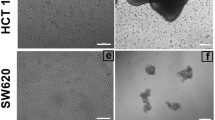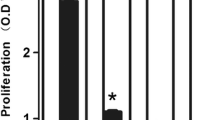Abstract
The examination of the impact of microgravity on biological systems has gained considerable attention owing to its potential implications for health and disease. Simulated microgravity serves as a valuable methodology for elucidating the intricate cellular responses to altered gravitational conditions. This study investigates the effects of simulated microgravity on cellular DNA, employing four distinct cell lines—breast, brain, and esophageal cancer cells, in conjunction with normal cells for comparative analysis. The experiment utilized the comet assay test to quantitatively assess DNA damage. The results revealed a discernible disparity in the response to simulated microgravity, notably with cancer cells exhibiting a significant increase in DNA damage compared to the relatively minimal effects observed in both control and normal cells. Furthermore, within the cancer cell lines, significant variations in the extent of DNA damage were evident, implying a cell type-dependent response to simulated microgravity. These findings illuminate the potential differential susceptibility of cancerous and normal cells to microgravity-induced DNA damage. Consequently, this research substantially contributes to our comprehension of microgravity-induced cellular responses and unveils promising avenues for targeted interventions in cancer therapy.









Similar content being viewed by others
Data Availability
No datasets were generated or analysed during the current study.
References
Al-Shammari, A.M., Al-Juboory, A.A., Al-Mukhtar, A.A., Ali, A.M., Al-Hili, Z.A., Yaseen, N.Y.: Abstract 1221: Establishment and characterization of a chemoresistant glioblastoma cell line from an Iraqi patient. Cancer Res. 74(19Supplement), 1221–1221 (2014). https://doi.org/10.1158/1538-7445.AM2014-1221
Al-Shammari, A., Alshami, M., Umran, M., Almukhtar, A., Yaseen, N., Hussien, A., Raad, K.: Establishment and characterization of a receptor-negative, hormone-nonresponsive breast cancer cell line from an Iraqi patient. Breast Cancer: Targets Therapy. 223 (2015). https://doi.org/10.2147/BCTT.S74509
Altaie, S., Alrawi, A.: Effects of simulated zero gravity on adhesion, cell structure, proliferation, and growth behavior, in glioblastoma multiforme. Nanatechnol. Precision Eng. 6(4) (2023). https://doi.org/10.1063/10.0019867
Altaie, S., Alrawi, A., Xuexin, D.: A novel model of gravity challenge device. Biomed. Signal Process. Control. (2023). 85https://doi.org/10.1016/j.bspc.2023.104911
Babu, B., Pawar, S., Mittal, A., Kolanthai, E., Neal, C.J., Coathup, M., Seal, S.: Nanotechnology enabled radioprotectants to reduce space radiation-induced reactive oxidative species. WIREs Nanomed. Nanobiotechnol. 15(5) (2023). https://doi.org/10.1002/wnan.1896
Baghoum, H., Alahmed, H., Hachim, M., Senok, A., Jalaleddine, N., Heialy, A., S: Simulated microgravity influences immunity-related biomarkers in Lung Cancer. Int. J. Mol. Sci. 24(1), 155 (2022). https://doi.org/10.3390/ijms24010155
Barbé, L., Lam, S., Holub, A., Faghihmonzavi, Z., Deng, M., Iyer, R., Finkbeiner, S.: AutoComet: A fully automated algorithm to quickly and accurately analyze comet assays. Redox Biol. 62, 102680 (2023). https://doi.org/10.1016/j.redox.2023.102680
Beheshti, A., McDonald, J.T., Hada, M., Takahashi, A., Mason, C.E., Mognato, M.: Genomic changes driven by Radiation-Induced DNA damage and microgravity in human cells. Int. J. Mol. Sci. 22(19), 10507 (2021). https://doi.org/10.3390/ijms221910507
Beleon, A., Pignatta, S., Arienti, C., Carbonaro, A., Horvath, P., Martinelli, G., Castellani, G., Tesei, A., Piccinini, F.: CometAnalyser: A user-friendly, open-source deep-learning microscopy tool for quantitative comet assay analysis. Comput. Struct. Biotechnol. J. 20, 4122–4130 (2022). https://doi.org/10.1016/j.csbj.2022.07.053
Bevington, J.: Impacts of spaceflight on key steps in recombinant protein production. (2021). https://doi.org/10.26190/unsworks/22745
Borst, A.G., van Loon, J.J.W.A.: Technology and Developments for the Random Positioning Machine. RPM Microgravity Sci. Technol. 21(4), 287–292 (2009). https://doi.org/10.1007/s12217-008-9043-2
Bradley, A.: Production and analysis of chimaeras. In: Robertson, E.J. (ed.) Teratocarcinomas and Embryonic Stem Cells: A Practical Approach, pp. 113–151. IRL, Oxford (1987)
Contino, G., Eldridge, M.D., Secrier, M., Bower, L., Elliott, F., Weaver, R., Lynch, J., Edwards, A.G., P. A. W., Fitzgerald, R.C.: Whole-genome sequencing of nine esophageal adenocarcinoma cell lines. F1000Research. 5, 1336 (2016). https://doi.org/10.12688/f1000research.7033.1
Ganapathy, S., Muraleedharan, A., Sathidevi, P.S., Chand, P., Rajkumar, R.P.: Comput. Methods Programs Biomed. 133, 143–154 (2016). https://doi.org/10.1016/j.cmpb.2016.05.020 CometQ: An automated tool for the detection and quantification of DNA damage using comet assay image analysis
Gregg, R.K.: Implications of microgravity-induced cell signaling alterations upon cancer cell growth, invasiveness, metastatic potential, and control by host immunity (pp. 107–164). (2021). https://doi.org/10.1016/bs.ircmb.2021.01.004
Gupta, S., Ahmad, N., Nieminen, A.-L., Mukhtar, H.: Growth inhibition, Cell-Cycle Dysregulation, and induction of apoptosis by Green Tea Constituent (-)-Epigallocatechin-3-gallate in androgen-sensitive and androgen-insensitive human prostate carcinoma cells. Toxicol. Appl. Pharmcol. 164(1), 82–90 (2000). https://doi.org/10.1006/taap.1999.8885
Gyori, B.M., Venkatachalam, G., Thiagarajan, P.S., Hsu, D., Clement, M.-V.: OpenComet: An automated tool for comet assay image analysis. Redox Biol. 2, 457–465 (2014). https://doi.org/10.1016/j.redox.2013.12.020
Hauserman, M.R., Rice, K.C.: Growth of Staphylococcus aureus using a Rotary Cell Culture System (pp. 79–88). (2021). https://doi.org/10.1007/978-1-0716-1550-8_10
Hong, Y., Han, H.-J., Lee, H., Lee, D., Ko, J., Hong, Z., Lee, J.-Y., Seok, J.-H., Lim, H.S., Son, W.-C., Sohn, I.: Deep learning method for comet segmentation and comet assay image analysis. Sci. Rep. 10(1), 18915 (2020). https://doi.org/10.1038/s41598-020-75592-7
Johnson, K.V.L., Michael, A.P., Saehle, T.: Central Nervous System Neoplasms in Microgravity. In Spaceflight and the Central Nervous System (pp. 107–121). Springer International Publishing. (2022). https://doi.org/10.1007/978-3-031-18440-6_8
Land, H., Chen, A.C., Morgenstern, J.P., Parada, L.F., Weinberg, R.A.: Behavior of myc and ras oncogenes in Transformation of Rat embryo fibroblasts. Mol. Cell. Biol. 6(6), 1917–1925 (1986). https://doi.org/10.1128/mcb.6.6.1917-1925.1986
Prasad, B., Grimm, D., Strauch, S.M., Erzinger, G.S., Corydon, T.J., Lebert, M., Magnusson, N.E., Infanger, M., Richter, P., Krüger, M.: Influence of Microgravity on apoptosis in cells, tissues, and other systems in vivo and in Vitro. Int. J. Mol. Sci. 21(24), 9373 (2020). https://doi.org/10.3390/ijms21249373
Saad, Z., Barakat, N., Tawfeeq, A.T., Yaseen, N.Y., Jaffer, T.H., Kamel, S., Abdamer, R., Abdullateef, A.: Iraqi Journal of Cancer and Medical Genetics Determination of DNA damage induced after bitter orange (Citrus aurantium) essential oil administrated in vivo. In Iraqi Journal of Cancer and Medical Genetics (IJCMG (Vol. 9, Issue 2). (2016)
Singh, N.P., McCoy, M.T., Tice, R.R., Schneider, E.L.: A simple technique for quantitation of low levels of DNA damage in individual cells. Exp. Cell Res. 175(1), 184–191 (1988). https://doi.org/10.1016/0014-4827(88)90265-0
Singh, R., Rajput, M., Singh, R.P.: Simulated microgravity triggers DNA damage and mitochondria-mediated apoptosis through ROS generation in human promyelocytic leukemic cells. Mitochondrion. 61, 114–124 (2021). https://doi.org/10.1016/j.mito.2021.09.006
Tan, X., Xu, A., Zhao, T., Zhao, Q., Zhang, J., Fan, C., Deng, Y., Freywald, A., Genth, H., Xiang, J.: Simulated microgravity inhibits cell focal adhesions leading to reduced melanoma cell proliferation and metastasis via FAK/RhoA-regulated mTORC1 and AMPK pathways. Sci. Rep. 8(1), 3769 (2018). https://doi.org/10.1038/s41598-018-20459-1
Topal, U., Zamur, C.: Microgravity, Stem Cells, and Cancer: A New Hope for Cancer Treatment. Stem Cells International, 2021, 1–9. (2021). https://doi.org/10.1155/2021/5566872
van Loon, J.J.W.A.: Some history and use of the random positioning machine, RPM, in gravity related research. Adv. Space Res. 39(7), 1161–1165 (2007). https://doi.org/10.1016/j.asr.2007.02.016
Willey, J.S., Britten, R.A., Blaber, E., Tahimic, C.G.T., Chancellor, J., Mortreux, M., Sanford, L.D., Kubik, A.J., Delp, M.D., Mao, X.W.: The individual and combined effects of spaceflight radiation and microgravity on biologic systems and functional outcomes. J. Environ. Sci. Health Part. C. 39(2), 129–179 (2021). https://doi.org/10.1080/26896583.2021.1885283
Zhao, T., Tang, X., Umeshappa, C.S., Ma, H., Gao, H., Deng, Y., Freywald, A., Xiang, J.: J. Cell. Biochem. 117(9), 2138–2148 (2016). https://doi.org/10.1002/jcb.25520 Simulated Microgravity Promotes Cell Apoptosis Through Suppressing Uev1A/TICAM/TRAF/NF-κB-Regulated Anti-Apoptosis and p53/PCNA- and ATM/ATR-Chk1/2-Controlled DNA-Damage Response Pathways
Funding
No funding was received to assist with the preparation of this manuscript.
Author information
Authors and Affiliations
Contributions
I am one of the authors of this study (corresponding researcher), and I want to show you that there is no conflict of interest in the formation of this study with great gratitude and respect.
Corresponding author
Ethics declarations
Ethical Approval
“Not applicable”. The cell lines have already been established by (Al-Shammari et al. 2014) for the ANGM5 cell line, Bradley (1987) for the REF cell line, Contino et al. (2016) for the SK-GT-4 cell line (ECACC 11012007), and (Al-Shammari et al. 2015) for the AMJ13 cell line. They were adopted at the Iraqi Center for Cancer Research and Medical Genetics at Al-Mustansiriya University in Baghdad, Iraq.”
Conflict of Interest
The authors have no conflicts to disclose.
Additional information
Publisher’s Note
Springer Nature remains neutral with regard to jurisdictional claims in published maps and institutional affiliations.
Rights and permissions
Springer Nature or its licensor (e.g. a society or other partner) holds exclusive rights to this article under a publishing agreement with the author(s) or other rightsholder(s); author self-archiving of the accepted manuscript version of this article is solely governed by the terms of such publishing agreement and applicable law.
About this article
Cite this article
Altaie, S., Alrawi, A., Duan, X. et al. Exploring the Impact of Simulated Microgravity on Cellular DNA: A Comparative Analysis of Cancer and Normal Cell Lines. Microgravity Sci. Technol. 36, 28 (2024). https://doi.org/10.1007/s12217-024-10116-w
Received:
Accepted:
Published:
DOI: https://doi.org/10.1007/s12217-024-10116-w




